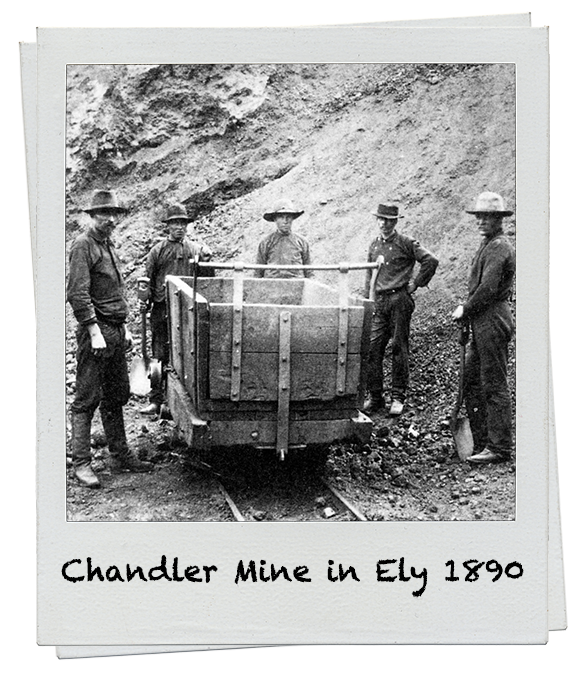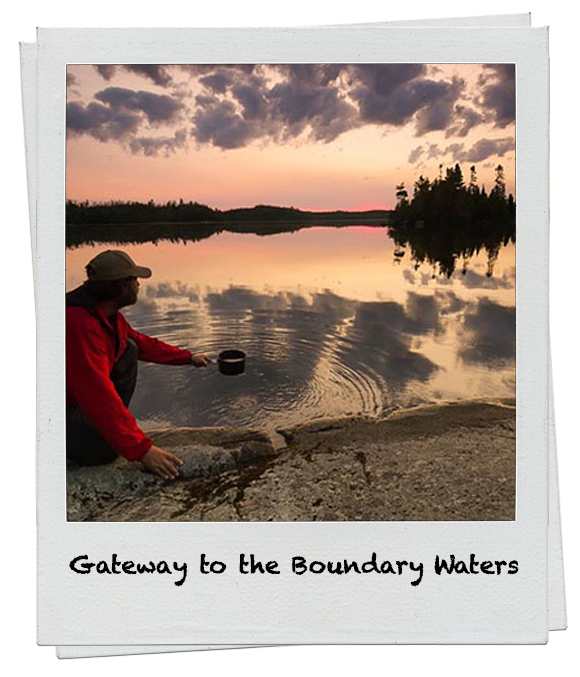Ely Heritage
Throughout its rich history, when Native peoples made their way to northern Minnesota area from the east coast, Ely has adapted to ever-changing economic conditions. Settlers and prospectors came to the area during the gold rush but very little gold was found; instead, they discovered an area rich in iron ore. Initially, open pit mines were used to extract the ore, but operations soon went underground to reach large deposits. The need for lumber to serve as the framework for the mines led to an emerging logging industry and a new source of economy.
While demand for iron ore surged during the years around World War I, the 1960s and 1970s saw decreased demand and the closure of many mines and logging operations. In 1964, the U.S. Congress passed the Wilderness Act, making the Boundary Waters Canoe Area part of the new National Wilderness Preservation System and creating a new source of economic stability.
EARLY SETTLEMENT:
The Lake Vermilion Gold Rush brought the first settlers to the Ely area in 1865. Little gold was discovered but large deposits of iron ore were unearthed and proved to be a valuable natural resource. Railroad was laid between Tower and the newly incorporated city of Florence in 1888. After ore was discovered a bit further west, the town moved and changed its name. “Ely” was chosen in honor of Michigan mining executive Samuel B. Ely, who continually supported the Vermilion Range but was never known to visit the namesake town.
Images provided by: The Minnesota Historical Society and the Ely Winton Historical Society


Logging
The vast number of immigrants that came to the Ely area led to a thriving logging industry as lumber for building homes and businesses grew rapidly. The need for lumber surged as well when mining moved underground, requiring timber beams to support shafts and tunnels. Most large scale commercial logging for local milling purposes ended in the 1920’s but smaller scale local operations are still successfully operating. Loggers today primarily haul wood to local mills in the Duluth and North Shore region for the purposes of making pulp for the paper industry.
Mining
Iron ore mining operations in Ely began with the opening of the Chandler mine in 1888. The industry grew quickly with the opening of the Pioneer Mine in 1889, Zenith in 1892, and the Savoy and Sibley mines in 1899. Originally, miners used pick axes, shovels and wheel barrels to move the ore into waiting ore cars, but as the ore body was recovered, operations shifted underground. Ore from the mines were shipped by rail to the ports in Duluth and loaded into lake freighters bound for steel mills in the east. By 1901, Minnesota was the leading iron ore producing state. In total, eleven mines opened and closed in the Ely area, producing more than 86 million long* tons of ore over an 80-year period.
Today, visitors can view the Pioneer Mine Shaft House and read about the history of mining while taking a stroll around the Trezona Trail. The trail circles Miners Lake, was formed after the closing of the Pioneer mine in 1967.
*A long ton equals 2,240 pounds vs a U.S. short ton, which equals 2,000 pounds


Native American
Northern Minnesota Native American tribes were often known by a variety of names, including Chippewa, Anishinaabe and Ojibwe. The Bois Forte band of Ojibwe made their way to northern Minnesota area from the east coast, following the Saint Lawrence River, the Great Lakes and many inland rivers. Their first contact with settlers came in the 1700’s, when French voyageurs traveled to the area in search of furs. Today, Ojibwe culture can be experienced while visiting the Bois Forte Heritage Center and Cultural Museum on the grounds of the Fortune Bay Casino, a short 30 miles south of Ely.
Many Native American traditions, such as ricing, are still practiced in the area today. Zizania aquatica, commonly known as wild rice, is harvested by canoeing into a stand of plants, bending the ripe grain heads with wooden sticks (called knockers) and gently tapping the mature seeds so they fall into the canoe. Native American influence is also found in the names of many area lakes and rivers such as the Kawishiwi, which in Ojibwe language means “river full of beaver or muskrat houses”.
The Bois Forte now operate the Fortune Bay Casino near Tower, MN
Tourism
While people may think that the tourism industry “boom” in Ely started in 1964 when the Boundary Waters Canoe Area became a federally protected area, many fishing and hunting camps actually provided wilderness experiences for outdoors men and women dating back to the early 1900’s.
Ely has enjoyed success as the “gateway to the Boundary Waters” and continues to provide outdoor enthusiasts with a variety of activities such as fishing, hunting, wild ricing, canoeing, kayaking, boating, ATV riding and snowmobiling, camping, hiking and cross country skiing.
In addition to natural attractions, Ely also offers world-class attractions dedicated to research and public education of local species, including the International Wolf Center and the North American Bear Center. If you are interested in more of the local history and folk lore, Ely offers the Dorothy Molter Museum, the Ely Art and Heritage Center and the Ely Winton Historical Society Museum. The diverse experiences inspires visitors to return year after year and makes Ely an amazing community to live, work, vacation and play.

